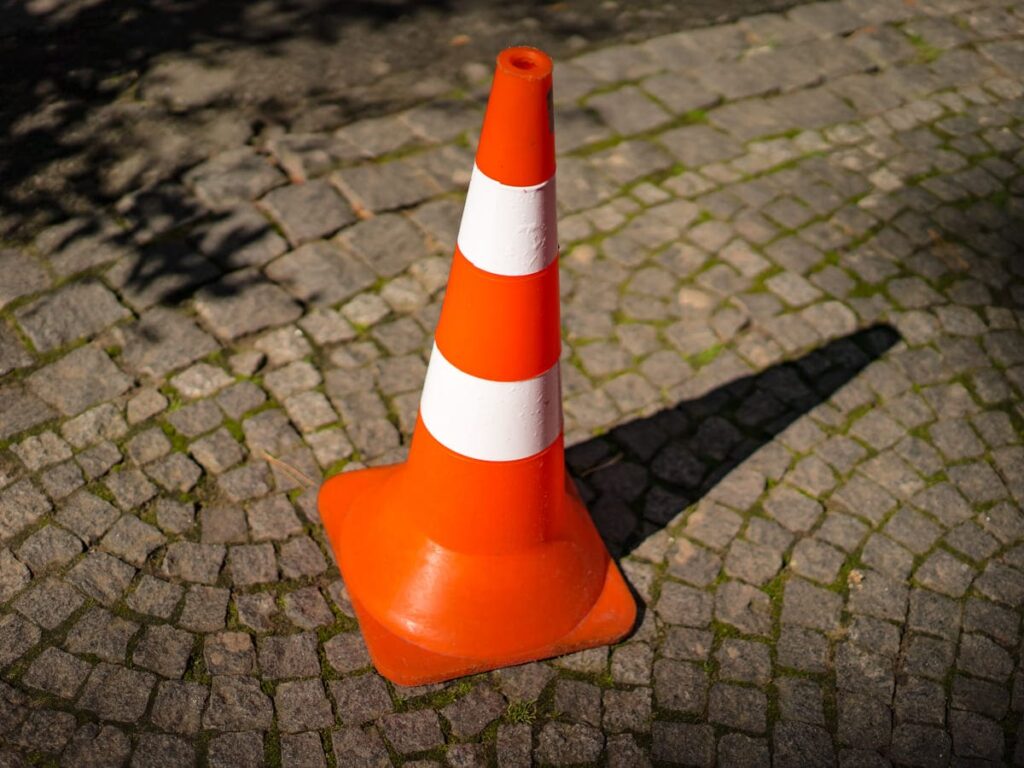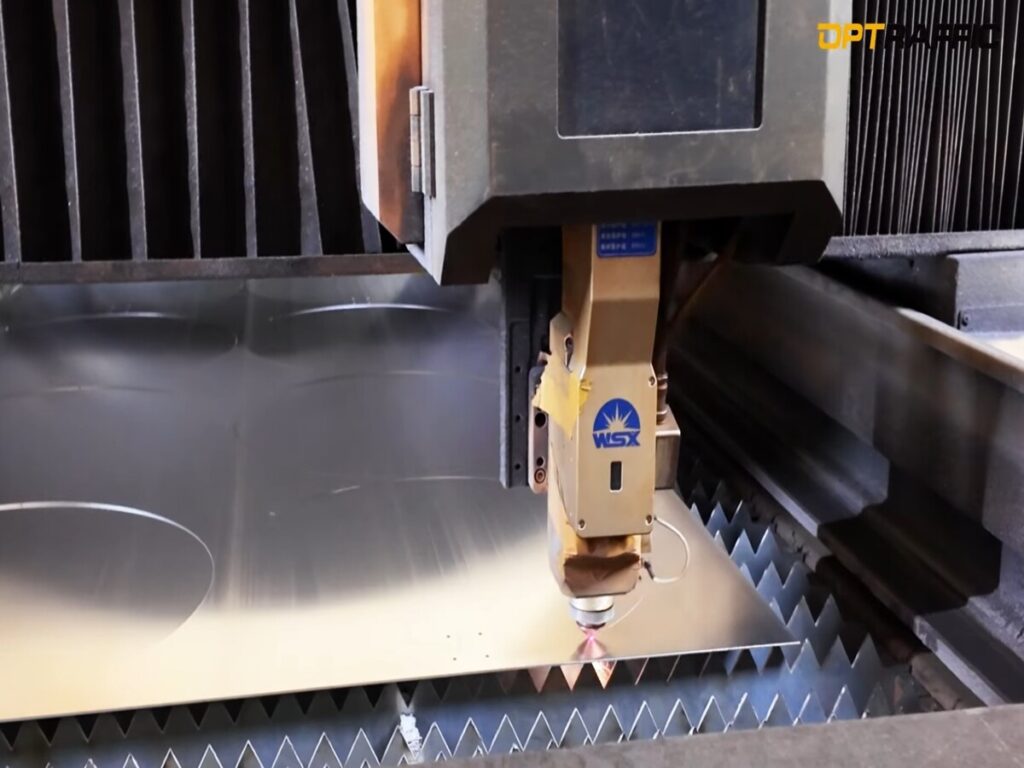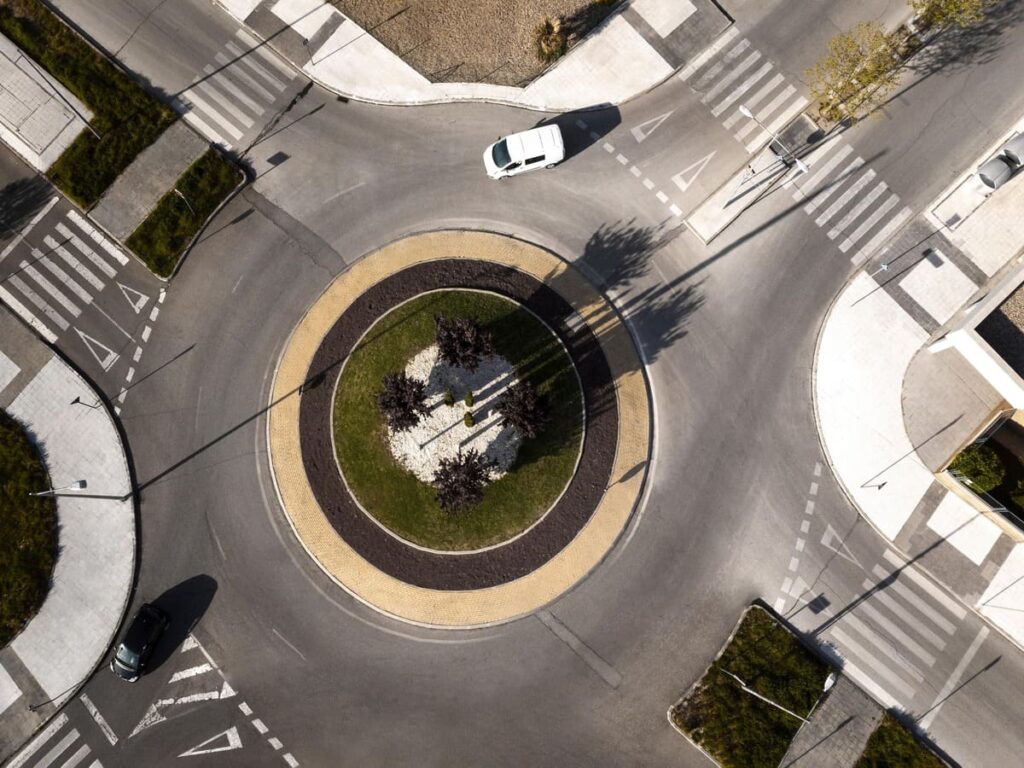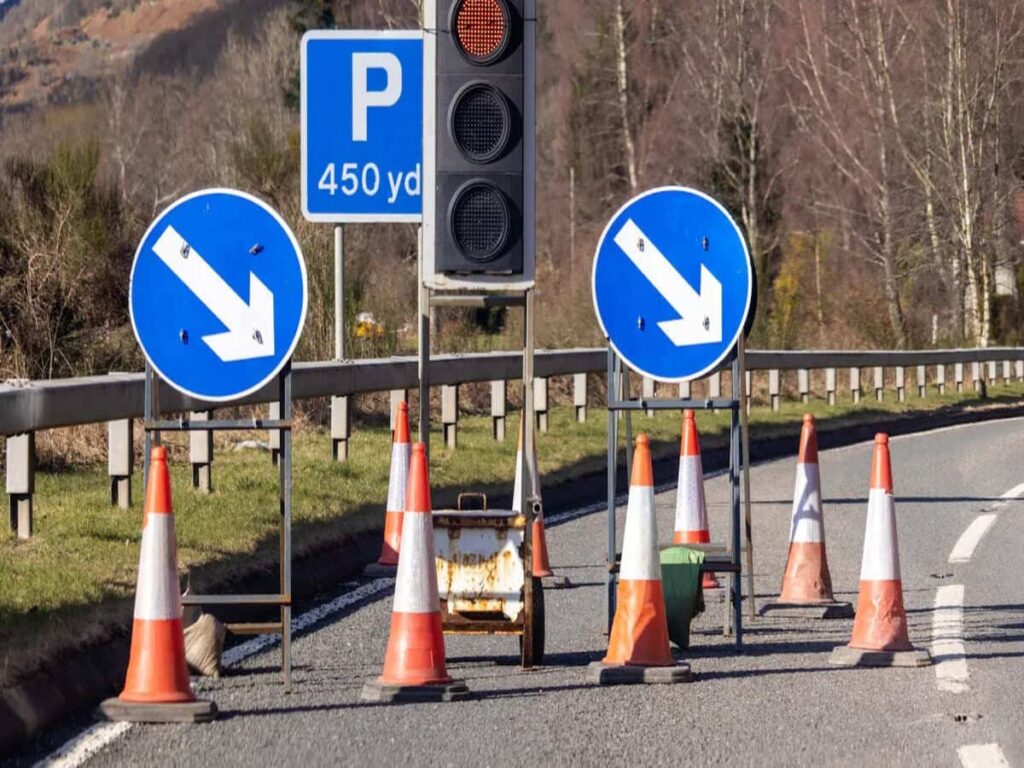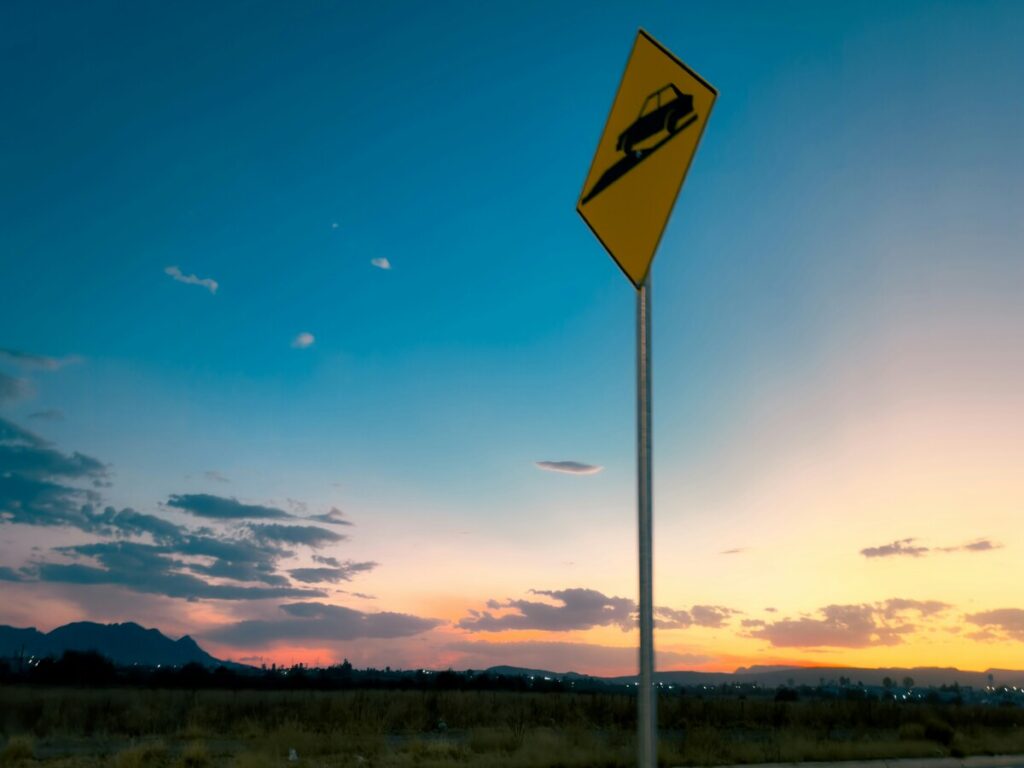
ACM is the best material for high-visibility signs. Le matériel que vous choisissez affecte la longévité des signes ainsi que leur visibilité, ce qui est crucial pour la sécurité et la conformité aux réglementations. De nombreux experts signes recommandent ACM en raison de sa performance supérieure. Tandis que les panneaux en plastique sont toujours utilisés dans certaines zones, ACM et le plastique sont des matériaux communs pour les panneaux de circulation. Cependant, Les panneaux ACM offrent une plus grande visibilité. Ceux qui recherchent des panneaux de trafic à vendre sélectionnent souvent ACM car une visibilité claire est primordiale.
Chez OPTRAFFIC, we understand the importance of visibility and durability in traffic signage. That’s why we offer a range of high-quality panneaux de signalisation for sale designed to meet the highest standards of safety and performance. Explore our selection today to ensure your signage stands out and remains effective for years to come.
Visibilité
Daylight Performance
How well a sign can be seen in the day is very important. The material you pick changes how long the sign keeps its colour and how clear it looks in the sun. ACM is good at not fading or getting damaged by weather. Dibond, which is a type of ACM, keeps its colour and shape for five to ten years, even outside in tough weather. This makes ACM a good choice for signs that need to last a long time outdoors.
Signes en plastique like Coroplast are light and cheap. But these signs lose their colour and break down faster in the sun. Coroplast signs start to fade and wear out much sooner than ACM signs. Sintra Board is another kind of plastic sign. It lasts longer than Coroplast but does not keep its colour as well as ACM. If you want a sign to stay bright and easy to see for a long time, ACM is better than plastic.
Note: If you add a UV gloss coating to ACM traffic signs for sale, they can handle sunlight even better and stay bright for many years.
Night-Time Reflectivity
It is very important for traffic signs to be seen at night. Both ACM and plastic signs can have reflective vinyl added to help drivers see them in the dark. The kind of reflective sheeting put on the sign helps people see it better at night.
| Type de matériau | Description | Reflective Vinyl Availability | Visibility Performance in Low-Light/Night-time |
|---|---|---|---|
| ACM (Composite d'aluminium) | Fort, plat, and does not rust if scratched; lasts well outdoors | Can have 3M™ Reflective Vinyl coatings | Very good at being seen at night; ProGlow Reflective Vinyl is extra bright and clear, vu de loin |
| Plastique (PVC, Polyéthylène, Cor-X) | Tough plastic; some are bendy, some are stiff; can be put up in different ways | Can have 3M™ Reflective Vinyl coatings | 3M™ Standard Reflective Vinyl is good for seeing in low light; ProGlow Reflective Vinyl is the brightest and can be seen from far away |
Traffic signs must follow strict rules for how well they reflect light. En Australie, rules like ALS 1742 et AS / NZS 1906 say traffic signs for sale must use matériaux rétroréflectifs except for black parts. Other countries have rules too, like ASTM and EN, for reflective sheeting. ACM signs are flat and strong, so it is easy to put good reflective sheeting on them. This helps people see the signs from far away, Même la nuit ou par mauvais temps.
Plastic signs can also have reflective coatings, but they are mostly used for short-term or less important signs. Signs that need to last a long time on roads are usually made from ACM or aluminium to meet safety rules. Different grades of reflective sheeting, like Engineer Grade or Diamond Grade, are often put on ACM signs to make sure they are easy to see.
Conseil: For important road signs, always make sure the traffic signs for sale have the right reflective sheeting and meet the rules for being seen.
Durabilité
Résistance aux intempéries
Weather resistance is very important for outdoor signs. Signs outside face rain, vent, neige, et un soleil fort. The material you pick changes how long the sign lasts. It also affects how well the colours stay bright. ACM signs are made from two thin aluminium sheets and a plastic core. These signs are very good at handling bad weather. Ils peuvent durer plus que 20 années avec peu de soin. Laminated prints on ACM signs stay bright for 4 ou 5 années. They do not fade quickly. The aluminium top layer keeps out UV rays, eau, et rouille. You only need water and mild soap to clean them. This keeps the signs looking new. You can add special coatings to make them even stronger.
Plastic signs are usually made from PVC or similar stuff. These signs do not last as long outside. Most plastic signs fade, fissure, or peel after 18 à 36 mois. Sunlight breaks down the colours in the plastic. This makes the colours fade faster. Hot and cold weather and storms make this happen even quicker. Plastic signs may look nice at first. But they lose their good look much sooner than ACM signs.
Note: Dans des endroits proches de la mer, ACM signs do not rust from saltwater. This makes them great for highways and roads by the beach.
Force d'impact
Impact strength means how well a sign can take a hit. This could be from flying sticks or someone bumping into it. ACM signs are strong because of the aluminium and plastic core. This mix helps the sign stand up to bumps and knocks. The aluminium layers help the sign keep its shape. They also protect the printed part.
Plastic signs have different impact strength. Some plastics are hard but can snap easily. Others bend more but might not break. This means some plastic signs can crack if hit. Others might just bend. But ACM signs are usually better at stopping damage. The aluminium top helps protect them. On busy roads or places with lots of cars, ACM signs last longer.
Conseil: If you want traffic signs for sale that last, handle weather, and are tough, ACM is the best choice for most outdoor signs.
ACM Performance
Structure and Benefits
ACM is a great choice for signs you need to see easily. It has two thin aluminium sheets stuck to a plastic core. This makes the panel light but also strong. Many signs use ACM because it mixes the good parts of aluminium and plastic. The aluminium has a special coating that keeps the sign safe from bad weather. This coating also helps the sign look new for longer. ACM signs look like normal aluminium signs, so they work well for any project.
ACM has lots of good points for making signs. You can cut and shape the panels easily. This means designers can make many kinds of signs. ACM is light, so it is easy to move and put up. Big signs can use ACM because it does not bend easily. When you add High Intensity Prismatic Reflective sheeting, the sign is easier to see. This sheeting meets important rules for road and safety signs. That is why many road signs use ACM. ACM is one of the top materials for outdoor signs that need to be strong.
- ACM has two thin aluminium sheets and a plastic core.
- The aluminium has a special polyester coating.
- ACM signs are light and strong.
- The panels are easy to change for different signs.
- Special reflective sheeting makes the signs brighter and meets key rules.
Résistance environnementale
ACM signs are very good at handling tough weather. The aluminium on top keeps out rain, soleil, et le vent. Many signs get a lot of sun, but ACM keeps its colour and shape. The polyester coating stops the sign from fading or rusting. ACM signs last for years, even near the sea where there is salty air. The plastic core makes the sign even stronger, so it does not crack or bend. Lots of signs on busy roads use ACM because it stays bright and easy to read. ACM signs work well in every season. Ils durent longtemps, so they are a smart pick for anyone who needs signs that last.
Conseil: You only need water and mild soap to clean ACM signs and keep them looking good.
Signes en plastique
Utilisations typiques
Plastic signs are used in many places. People pick them for jobs that do not last long. In busy work areas, entrepôts, et des bureaux, plastic signs help give warnings and directions. Many workplaces use plastic signs for safety, comme “Prudence: Sol mouillé” ou “Sortie”. Ces signes sont légers, pour que les travailleurs puissent les déplacer facilement. Plastic sign frames and composite materials are strong and do not rust. This makes them good for wet places.
Plastic signs are good for events and building sites. Event organisers use them to guide people or show where not to go. Building teams use plastic signs for road closures or warning about dangers. Plastic signs can bend to fit curved places, which helps in crowded spots. Acrylic and PETG plastics have different levels of clearness and strength. This means signs can be made for what each place needs. Plastic signs last up to two years outside if the weather is not too harsh. This makes them a smart choice for short jobs.
- Indoor safety signs: avertissements, information, and directions in offices, entrepôts, et usines.
- Signes extérieurs temporaires: sites de construction, événements, et les zones de travail.
- Flexible signs: fit curved places in busy spots.
- Cheap signs: easy to put up and swap.
Note: Plastic signs are best when you need to put them up and take them down quickly.
Limites
Plastic signs have some problems outside. Ils peuvent s'estomper, plier, or twist in strong sun, vent, ou pluie. Au fil du temps, the colours on plastic signs may not stay bright. This makes them harder to see. Par mauvais temps, plastic signs might not keep their shape or stay put. Workers may need to fix the signs more often.
The table below shows how plastic signs and ACM compare:
| Fonctionnalité | Signes en plastique (PVC, HDPE) | Matériau composite en aluminium (ACM) |
|---|---|---|
| Durabilité | Peut s'estomper, plier, ou tordre le vent; do not last as long outside | Reste fort et garde sa forme; lasts much longer |
| Résistance aux intempéries | Peut être endommagé par le mauvais temps | Very good at stopping rust and damage from weather |
| Intégrité structurelle | Light but may need extra fixing to stay put | Light and strong at the same time |
| Visibilité | Can be hard to see if faded or bent | Stays easy to see with less work |
| Installation | Simple to move and put up because they are light | Plus lourd, needs strong fixings |
Plastic signs are easy to use and cheap, but you may need to replace them after a few years. ACM signs stay strong and easy to see for much longer. For traffic signs for sale that need to last outside, ACM is usually the best choice.
Best Material for Traffic Signs for Sale
Zones à grande vitesse
Signs on fast roads must be seen from far away. The right material helps keep people safe. Experts pick aluminium composite material (ACM) with Class 1W reflective sheeting for these signs. This sheeting is very bright and works from many angles. Drivers can see these signs early, Même la nuit ou par mauvais temps. Class 1W sheeting follows strict Australian rules like AS/NZS 1906.1 and ALS 1742. Well-known brands like Avery Dennison and 3M make these strong materials.
Highway signs use ACM or galvanised steel. These materials do not rust and handle tough weather. Signs stay strong and clear for many years. Installers put these signs on strong posts or breakaway systems. This keeps the signs steady in wind and rain. Microprismatic retroreflective sheeting, like the T-11500 Series OmniCube, gives the best visibility for guide signs. The T-7500 and T-6500 series also shine brightly and last a long time. These features make ACM the best choice for traffic signs for sale on fast roads.
Conseil: Always check that traffic signs for sale meet the right rules for being seen and lasting a long time before you buy them.
Critical Control Signs
Critical control signs warn drivers about dangers or changes ahead. These signs must always be easy to see. For these signs, ACM with top reflective sheeting is the best choice. This keeps the signs bright and clear, jour ou nuit. Signes d'urgence, limites de vitesse, and road closure signs all need to be seen easily.
Both cities and country areas use ACM for these important signs. Dans les villes, signs face pollution and lots of cars. Dans le pays, signs face strong sun and storms. ACM does not rust or fade quickly. Reflective sheeting helps the signs stay bright, Même quand il fait sombre. Plastic signs can be used for short times, but ACM is better for signs that need to last.
When picking traffic signs for sale, buyers should choose the right material for the job. Signs in busy or risky places need ACM with good reflective sheeting. This makes sure the signs are easy to see and follow all safety rules.
Installation and Handling
Weight Considerations
Weight plays a big role in how easy it is to install and handle traffic signs for sale. ACM signs use two thin sheets of aluminium with a plastic core. This design makes the signs light but strong. Each square metre of ACM weighs about 3.5 à 5.5 kilogrammes. Workers can carry these signs without much effort. The lightness of ACM comes from the polyethylene core, which keeps the signs easy to move while still giving them the strength of aluminium. Compared to solid aluminium, ACM signs weigh about half as much. This means installers can lift, carry, and position the signs with less strain. The reduced weight also helps lower labour costs and makes transport simpler. Plastic signs are also light, but ACM signs offer a better mix of strength and low weight. The light weight of ACM signs makes them a top choice for large outdoor signs and busy roads.
Mounting Systems
Mounting systems for ACM and plastic signs give installers many options. Cold mounting uses pressure-sensitive adhesives. Installers clean the surface with isopropyl alcohol, then press the signs into place. The adhesive gets stronger over time, reaching full strength in about 24 heures. This method works well for smooth surfaces and quick jobs. Mechanical mounting uses aluminium strips and VHB tape with screws. Installers attach strips to the edges of the signs, then use screws to hold everything tight. This method lets the signs flex a little, which helps keep them in place. For seamless looks, full frames or flex face systems can hide the joins between signs. Some jobs use pressure-sensitive tape for temporary signs or to hold parts while the adhesive cures. Mechanical mounting takes more time because it needs careful screw placement and sometimes extra bracing behind the signs. Both ACM and plastic signs work with these systems, but ACM signs stay flat and strong, making them easier to mount on posts, murs, ou cadres. Good mounting keeps the signs safe and easy to see in all weather.
Conseil: Always check that the mounting system matches the size and weight of the traffic signs for sale for the best results.
Rentabilité
Coût initial
When choosing materials for signs, many buyers look at the price first. Plastic signs usually cost less than ACM signs at the start. This lower price makes plastic signs a popular choice for short-term use. Event organisers, construction teams, and schools often pick plastic signs for temporary needs. Plastic emergency warning triangles and traffic signs offer reflective visibility at a lower price. Their lightweight build and easy moulding allow for many shapes and bright colours. These features help plastic signs stand out, Même dans les zones animées.
Cônes de signalisation en plastique also show how cost-effective plastic can be. Ils sont légers, facile à déplacer, et rapide à mettre en place. People use them for emergencies, minor repairs, ou événements. Their bright colours and reflective strips make them safe, Même la nuit. Bulk buying lowers the price even more. Plastic cones work well in parking lots, rues résidentielles, and places with little space. For projects that do not need heavy-duty signs, plastic is a smart, affordable option.
Note: Plastic signs are best for short-term, faible trafic, or space-limited projects where budget matters most.
Valeur à long terme
ACM signs cost more at first, but they give better value over time. These signs last much longer than plastic signs. ACM signs resist fading, craquage, et les dégâts causés par les intempéries. This means fewer replacements and less maintenance. Sur les routes très fréquentées, autoroutes, and in harsh weather, ACM signs stay clear and easy to read for years. Their strong build keeps them in place, even in storms or high winds.
Plastic signs may need replacing after a year or two, especially outdoors. This can make them more expensive in the long run. ACM signs, d'autre part, often last over a decade. Their durability saves money on repairs and replacements. For permanent or high-visibility needs, ACM signs offer the best long-term value.
Conseil: For projects where signs must last and stay bright, ACM signs are the best investment.
Impact environnemental
Recyclabalité
Recycling is important for signs. Many signs use plastics like PET, HDPE, PVC, LDPE, Pp, and PS. Each plastic type has its own recycling rules. Some plastics are easy to recycle. Others can be bad for the environment. The table below lists common plastics in signs and their recycling notes:
| Plastic Code | Plastic Type | Safety/Recycling Considerations |
|---|---|---|
| 1 | Polyethylene terephthalate (ANIMAL DE COMPAGNIE) | Usually safe and can be recycled. |
| 2 | Polyéthylène à haute densité (HDPE) | Safe and often recycled. |
| 3 | Polyvinyl chloride (PVC) | Difficile de recycler; best to avoid because of health and environmental risks. |
| 4 | Polyéthylène basse densité (LDPE) | Not very toxic but not always accepted by recycling centres; check local rules. |
| 5 | Polypropylène (Pp) | Safe and can be recycled. |
| 6 | Polystyrene (PS) | Toxic, can leak harmful chemicals, not recycled; avoid, especially for food. |
| 7 | Autre (acrylique, polycarbonate, nylon, fibreglass, etc.) | Different types; most are not easy to recycle and may be risky for health or the environment. |
ACM signs have aluminium and a plastic core. Many recycling centres take aluminium, so the metal layers in ACM signs can be recycled. The plastic core might not be recycled, but the aluminium means less waste. ACM signs last longer, so fewer signs go to landfill.
Conseil: Always check your local recycling rules before throwing away signs. Some centres take certain plastics, Mais d'autres ne le font pas.
Production and Safety
Making and getting rid of signs can affect people and nature. Workers need to be careful with some materials. Par exemple, PVC and polystyrene can let off dangerous chemicals if burned or left outside. Signs made from safer plastics like PET and HDPE are less risky.
When recycling or throwing away signs, safety is important. Only trained people should handle dangerous materials. Signs with special coatings or old materials may need extra care. Workers should wear gloves, lunettes, and protective clothes when handling some signs. Proper disposal stops bad chemicals from getting into the air or water.
Some recycling uses heat or chemicals to break down materials. High heat can turn dangerous fibres into safe glass or ceramic. These ways help cut down on waste and make recycling safer. Recycling signs means less rubbish in landfill and helps the environment.
Note: Picking signs made from recyclable materials helps keep people and nature safe. Safe recycling and disposal make communities cleaner and healthier.
ACM is the top pick for traffic signs for sale you need to see well. The aluminium layers help the colours stay bright and easy to spot. Aluminium does not rust or fade, Les signes durent donc plus longtemps à l'extérieur. Good visibility on roads helps keep people safe. Aluminium lets you add reflective sheeting, so signs are clear at night. ACM signs stay strong even in bad weather because of the aluminium. People should pick ACM with good aluminium for signs that stay bright. If you need more help, talk to a trusted supplier or check your local rules for traffic sign visibility.
To dive deeper into how material choices influence the future of traffic signs in Australia, lisez notre dernier blog, Comment les choix de matériaux façonnent l'avenir des panneaux de trafic à vendre en Australie.
FAQ
What is ACM and why do people use it for signs?
ACM stands for Aluminium Composite Material. It has two thin aluminium sheets with a plastic core. People choose ACM for signs because it stays strong, resists weather, and keeps colours bright for many years.
Les panneaux en plastique peuvent-ils être utilisés à l'extérieur?
Plastic signs work outdoors for short periods. They suit events, sites de construction, or temporary warnings. Au fil du temps, sun and rain can cause plastic signs to fade, fissure, ou se pencher. ACM signs last much longer outside.
Are ACM signs easy to recycle?
Many recycling centres accept the aluminium from ACM signs. The plastic core may not always be recycled. Recycling ACM signs helps reduce waste and supports a cleaner environment.
Which material is better for high-speed roads?
| Matériel | Visibilité | Durabilité | Meilleure utilisation |
|---|---|---|---|
| ACM | Excellent | À long terme | Routes à grande vitesse |
| Plastique | Bien | À court terme | Signes temporaires |
ACM signs give the best results for high-speed roads. They stay bright and strong for many years.

